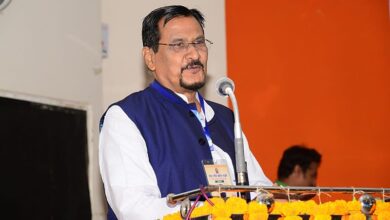Australian-led study makes breakthrough in plastic recycling

Canberra, Dec 9 : An Australian-led team of international researchers has developed a method to use polyethylene (PE) waste as a feedstock in a major breakthrough for reducing plastic waste.
In research published on Saturday, the team of experts detailed how they used photocatalysis to convert PE waste into a feedstock and valuable chemicals.
According to the study published on Saturday, which was led by the University of Adelaide with funding from the Australian Research Council, PE plastics make up the largest proportion of all plastic waste, primarily ending up in landfills.
Shizhang Qiao, Director of the Centre for Materials in Energy and Catalysis at the University of Adelaide and lead author of the study, said in a media release that the team’s findings prove the potential of catalytic recycling of PE waste.
Photocatalysts are substances that accelerate the rate of a chemical reaction caused by exposure to light.
In Saturday’s study, the team was able to successfully use photocatalysis to convert PE waste into ethylene, an important chemical feedstock that can be processed into industrial and daily products, as well as propionic acid, which is a colorless, oily liquid that can be used as an antimicrobial agent, preservative and fungicide.
“Plastic waste is an untapped resource that can be recycled and processed into new plastics and other commercial products,” Qiao said.
“Our fundamental research provides a green and sustainable solution to simultaneously reduce plastic pollution and produce valuable chemicals from waste for a circular economy.
“It will inspire the rational design of high-performance photocatalysts for solar energy utilisation and benefit the development of solar-driven waste upcycling technology.”
In addition to the University of Adelaide, contributors to the study include experts from the Wuhan Institute of Technology in China, University of Kent in the United Kingdom, and Heilongjiang University in China.






